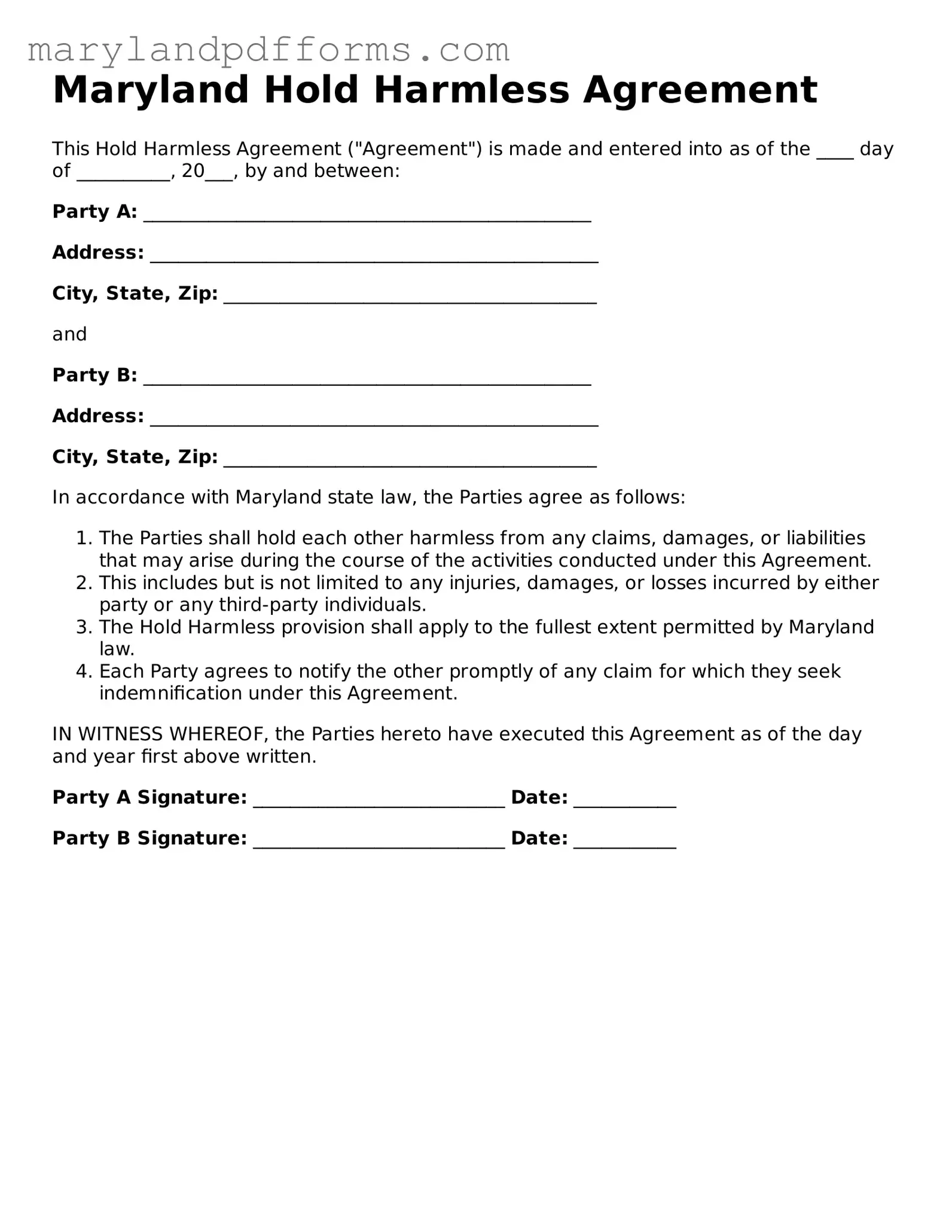Free Hold Harmless Agreement Document for the State of Maryland
A Maryland Hold Harmless Agreement form is a legal document that protects one party from liability for any damages or injuries that may occur during a specific activity or event. This agreement ensures that the other party assumes responsibility, allowing for a clearer understanding of risks involved. To get started on your own Hold Harmless Agreement, fill out the form by clicking the button below.
Fill Out Hold Harmless Agreement Now
